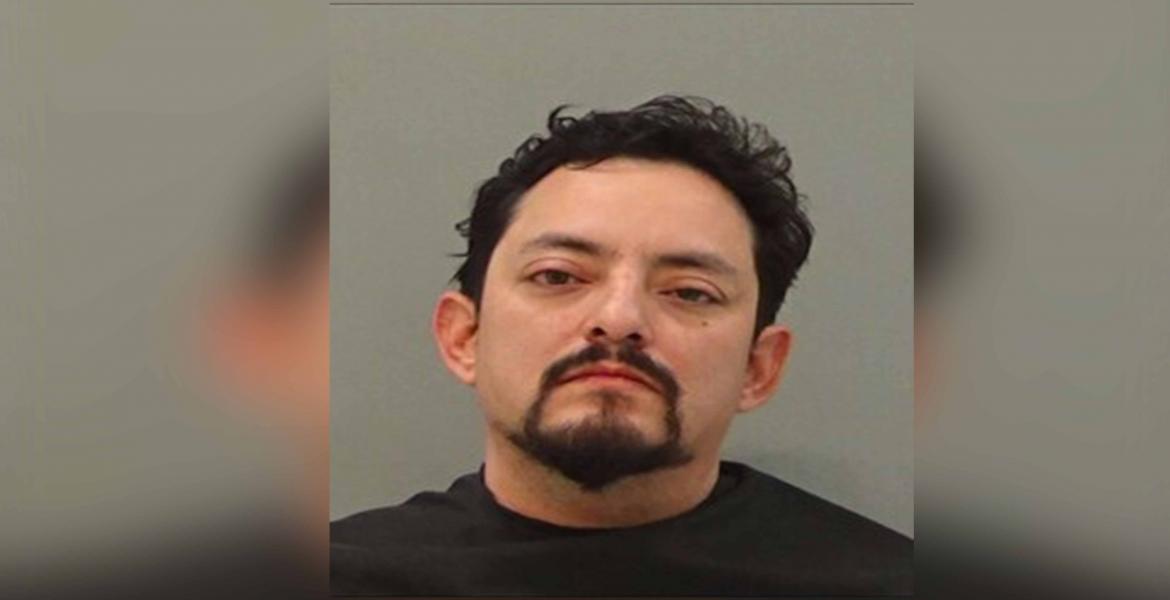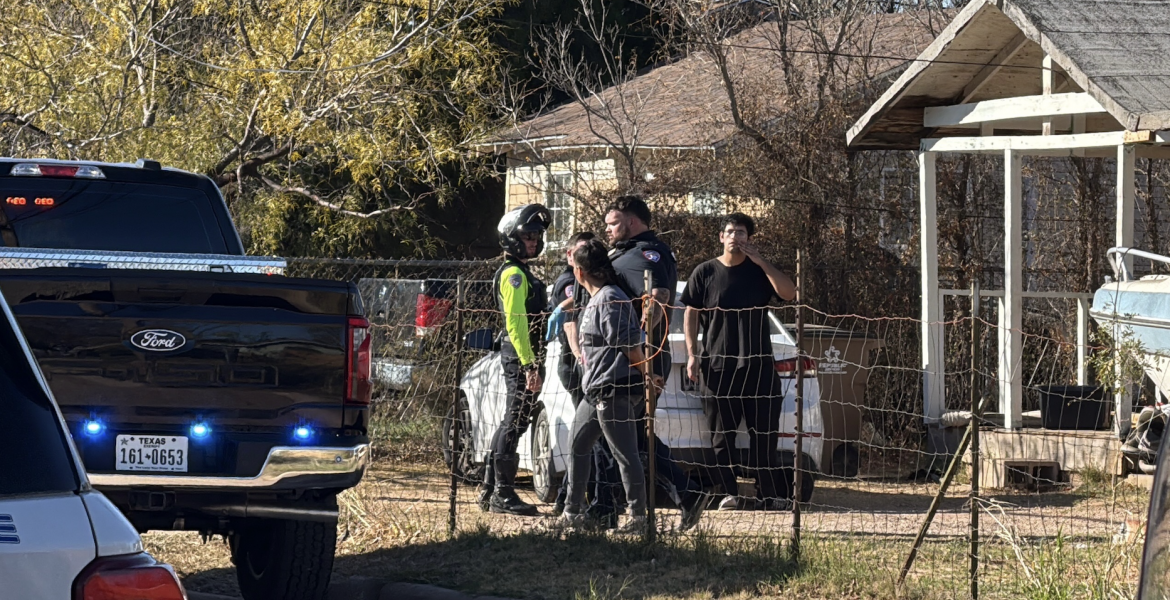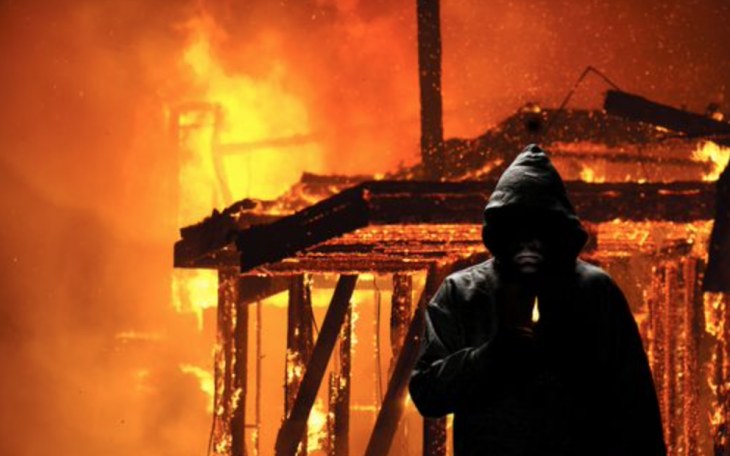SAN ANGELO, TX - Today, the Stephano Culbreath trial finally reached its final stage as the jury reconvened one last time to hear witnesses and testimony before they deliberated on the sentence they believed was appropriate for the crime. After another full day of hearing that testimony, the jury deliberated and handed down a sentence of 30 years.
After hearing his sentence, Culbreath broke down in tears.
Judge Woodward said, "I hope the end of this trial will close this chapter for both families."
The day began with District Attorney Allison Palmer presenting the jury with the additional charges Culbreath faced in Georgia and explained this information would raise the minimum amount for his sentence to 25 years. When asked before the court about the offenses committed in January of 2001 and August of 1996, Culbreath pleaded not guilty.
The first state witness to take the stand was Mrs. Clooney, David Titus’s mother. She explained that she and her son had always been together and looked out for one another. She has been disabled for many years and her son was the one responsible for helping her overcome any obstacles that her disability had caused in her life. She explained that even though she knew her son wasn't an angel, he had a “kind soul and helped people” whenever he could. She lamented the fact that even though she had shown her son how to take care of himself all his life, he was unable to do that this time. But even her grief does not compare to the sadness she feels when she sees her 6-year-old grandson, Daniel Titus, who misses his father every day.
The next witnesses presented by the state were employees of the San Angelo Police Department and an Abilene crime lab. D.A. Palmer asked about the chain of custody and how they had processed the evidence received. One of the witnesses, Robin Johnson, was asked to testify if the fingerprints she had gotten from Culbreath matched the fingerprints present on the judgment from court proceedings filed against Culbreath. Johnson stated that a couple of the documents had fingerprints that matched the Defendant, but the majority of them only had the Defendant's name and date of birth. The Defense objected to some of the content found in the documents, arguing that they spoke to possible previous acts not included in the formal judgment in this case. Detective Chapa was also recalled to the stand to explain how he had found meth in the center console of Culbreath’s maroon Suburban.
After this, the State rested and the court recessed for lunch. The afternoon included the Defense's witnesses and final arguments.
The defendant’s mother, Patricia Culbreath, gave her testimony first. She explained that she never knew about her son’s addiction to drugs and explained he had a fairly good upbringing.
She said, after her divorce, Culbreath had challenges growing up without his father. After his first arrest at the age of 16 is when she noticed he was having these problems.
When he first faced legal troubles, Culbreath’s girlfriend was pregnant with his first child at the time of his sentencing.
“It was a lot for me, and I’m sure it was a lot for him too,” Patricia Culbreath said.
The next testimony was from Nancy Walker, wife of Culbreath.
She acknowledged there was a distinct difference between how the Defendant acted while taking drugs and how he was normally. She said he would be gone for long periods of time and wouldn’t want to talk after coming home.
Walker said when Culbreath was himself, he was a great father to both his children. When he was first introduced to Walker’s daughter, he took on the role of being a father figure without any question, she said.
Palmer asked if Walker condoned the Defendant’s addiction to drugs, which Walker said she didn’t.
“I wish I could have done more to keep him home,” Walker said.
After a short break, Culbreath surprised the court by choosing to give his testimony.
He said his mother had raised him with good morals, and that he would never kill anyone because of money.
When asked if he had compassion for the Titus family, Culbreath said he was sorry for their loss. He added that he wished he could have done something to prevent it, but he couldn’t have because he wasn’t there during the murder.
“I did not kill David Titus,” Culbreath uttered three times consecutively.
Culbreath was then passed to Palmer for questioning. She asked whether he would dispute that Titus was murdered July 25, 2015 after being shot.
“I can’t dispute because I wasn’t there, “Culbreath responded.
Palmer then brought up his prior charges and asked if they belonged to him. He confessed that the charges submitted to the court were his from the past.
When asked if he ever attempted to sell drugs for profit, Culbreath said he was an addict and didn’t attempt to sell drugs.
He said he would purchase drugs in small quantities, and when asked to elaborate what that meant, he explained that crack rocks were sold for $5, and dope for $10.
Palmer then inquired where he got the money to afford these drugs as he had testified previously to losing his job a few months prior to the murder charges.
Culbreath said he got the money for drugs from gambling.
He acknowledged the gambling supported his drug habit and noted he could turn $1 into $50.
“I won more than I lost,” Culbreath said.
Palmer asked if he recalled a phone call between him and the husband of his first child’s mother where he said, “I went from nothing to something.”
Culbreath denied making that phone call and further noted he was an addict not a drug dealer.
After this testimony, both Palmer and Skinner motioned to rest and close.
Sentencing Closing Arguments
Skinner went first and asked the jury to remember their “humanity” when deciding the verdict. She noted from today’s testimonies that Culbreath had a troubling past, and that everybody has different resistance to dealing with short comings.
She noted the law is essential in any society; however, humanity is also a factor in this process.
“What are we here to achieve?” Skinner asked the jury.
She specified the family Culbreath would be leaving with this verdict, and noted the defendant’s age as 47 numerous times throughout her statement.
She closed by saying the Defendant owned up to his past. He had never gone to trial before, but he felt compelled to testify before the jury before they gave their verdict.
Palmer began with a strong response to remember “humanity” when she showed the jury a photo of the victim with his son.
“This little boy’s father was ripped away from him,” Palmer added.
Some of the jury members could be seen tearing up when the photo was displayed.
“How many more people have to suffer by his hands,” Palmer pointed to Culbreath.
She closed by saying it’s important to make sure justice is always served in this community.
Culbreath remained stoic during the State’s closing argument.
Closing Arguments That Determined the Guilty Verdict
Yesterday afternoon, both the Defense and State presented their final arguments that determined the verdict in this case. Defense Attorney Skinner spent almost two hours outlining the flaws in the investigation using a Power Point.
"If you can't get square one right, then you can't get two, three, or four right," she said. "You have to test evidence you have and don't guess."
Skinner also noted that detectives have to gather evidence and review what they have through scientific means; however, she said that wasn't done in this case.
Skinner said there was no DNA evidence that directly tied Culbreath to David Titus' murder. There was also no gunshot reside that directly tied him to the murder; there was no blood, no paint transfer on the bumper, and no blood spatter on the pavement where Titus' body was found.
"They can't tell you Titus was shot there," Skinner said. "You have to prove it happened the way you said. If they can't prove he was shot there, that is a big deal."
Skinner also pointed out that blood reports didn't come back for months. SAPD detectives assigned to the case created a theory and tried to find evidence to fit that theory rather than using evidence to develop a valid one."
Skinner also re-emphasized the timeline of events according to the state, and after that review, said, "It's not reasonable to shoot someone, leave the scene and come back to it later."
She questioned how blood got on Titus' arms if they weren't in a pool of blood, and reviewed the position of the victim's body, which doesn't fall in line with the theory established by SAPD detectives.
Skinner said the only place where blood spatter was found was on Titus' hands, and that transfer was never explained or thought about.
"His left hand had tons of blood, and we can't know where that came from," Skinner stated.
Overall, Skinner said there are so many unexplained aspects of this case. SAPD detectives took time to photograph dirt underneath Titus' thumb, but dirt was never collected to match the dirt on the hood of Culbreath's Suburban.
"All they did is test Stephano's stuff. They didn't test Titus' stuff. Nor did they take blood swabs," she added. "These types of things are important."
Additionally, detectives thought they had paint transfer from Culbreath's Suburban, which a final expert witness said wasn't the case. Detectives also took the paint transfer prior to measuring it. A crime scene investigator maintained that there was a general correlation between the height of the transfer and Culbreath's Suburban, but Skinner said there should have been a specific correlation of impact.
"Police figured it was close enough because they had thought of everything, until the lab reports came back months later," she continued. "Now, we have a problem."
Skinner also revisited the bike being struck by the Suburban theory, and the lack of skid marks and scratches. Police also never tested the blood drops found on the pavement. There was blood on Titus' feet, on the right side of his body, upper shoulder, and his body was surround by a major pool of blood.
"And they can't tell you who these belong to," Skinner scoffed. "That's important."
The Defense also mentioned how the police threw a sheet over Titus' body, which created more issues because it's unclear what transferred from his shirt to the sheet. There were also no pictures of the body that showed how the blood streaks flowed.
"These little details are crucial," Skinner said.
Skinner referred back to the audio clips played for the jury, and said although there's a cultural difference in the way Culbreath speaks, throughout it all, he maintains his innocence.
She then went on to discuss issues with witness testimony throughout the trial. Detective Cannady did not check phones or vehicles. He just wanted information on Culbreath.
"They've already made their decision," she said. "There's no flexibility. They found what they can to match their theory."
Loretta Mathis, a primary witness in the case, claimed to hear gunshots the night of Titus' death, but she said she hears things others don't. Not to mention, there were issues with her timeline of events.
Mathis said she heard gunshots at 4:55 a.m. and 4:58 a.m. She then said she tried to wake up her boyfriend Alex, but he would not wake up. She then told Detective Castro that Stephano showed up at her house at 4:49 a.m. After that, Mathis said her boyfriend got up at 5 a.m. and went home.
"That's not reasonable," stated Skinner.
Skinner also pointed out flaws in all the other witness testimony, and how their stories changed. She explained that the police never thought to suspect Barry Baty despite there being GSR on the front and back of his jersey. There was also no follow up on Mr. James, Mr. Arredondo, and another witness who could have been possible suspects.
"They never stayed flexible," Skinner repeated. "They never challenged their hypothesis. Square one is not right. Stephano Culbreath is not guilty. The State has not proven its case."
After her lengthy closing arguments, Skinner rested at 2:17 p.m., and after a five minute break, Palmer gave her final arguments.
Palmer told the jury to recall what they heard throughout the trial and not to base their conclusions on Skinner's version of what took place, or even hers if they recalled things differently. She then went on to emphasize the timeline of Titus' death, according to State witness testimony. Here is what she said took place on July 25, 2015:
- 3:51 a.m. - Phone in victim's possession last used.
- 4:40 a.m. to 4:52 a.m. - Culbreath was looking for Titus.
- Approx. 5 a.m. - Culbreath was in the vicinity of gunshots at the time they were fired. After the encounter, at the Mathis residence, Culbreath drops of Mr. Baty on 8th St.
- 5:50 a.m. - 9-1-1 call made, Titus found.
- 6:58 a.m. - Culbreath's account was used at Our Time game room. Palmer reminded the jury about the hour difference.
- 7:41 a.m. - Culbreath used his account for the last time at the game room.
- Approx. 7:45 a.m. - Culbreath drove by the scene of the crime, which was out of the way to Ms. Powell's home.
- Approx. 8:30 a.m. - Culbreath dropped off his SUV and left with Beasley.
- 10:07 a.m. - Culbreath gets detained at William Hollace's residence.
Palmer also came to SAPD's defense. She told the jury that if they felt the evidence lacking in this case to contact Chief Frank Carter. However, the jury has to realize the officers are limited by time and resources. She also mentioned that the police didn't just make up their minds to charge Culbreath. He was initially arrested on the drug charge, not murder.
The D.A. also said she can see why the police finally did decide to charge him.
"The thing is, Titus didn't die by the car," Palmer said. "He was shot."
She then said, "Here's what we do know:"
- Not only was Culbreath in an area where shots were fired, but they were fired at 5 a.m. Immediately after, Culbreath was found.
- Culbreath admitted that Ms. Mathis was scared after hearing the shots.
- The Defendant came back with Mr. Baty, who had GSR on his clothing.
According to Palmer, Culbreath, with the windows of his Suburban down, got out of the vehicle, struck Titus with his gun to the forehead, then shot and killed him. The discharge caused the GSR to travel inside the Suburban, which explains the GSR on the vehicle's door and on Baty's jersey. However, experts said no GSR was found on Culbreath's skin.
Also, when Culbreath is at the game room with Ms. Powell, he never talked about the manhunt, and they end up driving by the crime scene. The route Culbreath took is close to the crime scene, and to Mathis' house. It's not a coincidence when someone is shot and killed a block away, Palmer said.
Palmer also asked why Culbreath would take the route he did with all the yield signs.
"He's just killed somebody and wants to see if the police has found it yet," Palmer told the jury. "Why is he so worried? Because he knows they know now and they've seen him driving by the scene."
Palmer also said Culbreath abandoned his vehicle because he didn't want to be caught.
Beasley also said there was a gun in Culbreath's pocket, and that he was looking for Titus that night with a gun. However, Beasley said it may have also been a scale. Palmer also noted that GSR was found in Culbreath's pocket.
"That was confirmed," she said.
The State also brought up the audio clips, and asked the following:
- Why did Culbreath say he didn't know Titus when he did?
- Why would he celebrate the lack of evidence in the case?
- Why is police not having the weapon good for Culbreath?
- Why did he come up with an elaborate lie about GSR? Why did he tell Walker a bullet hole was in the floor along with a shell casing to explain the presence of GSR on his shorts and in his vehicle unless he knew he had it on him?
Culbreath celebrated that lack of evidence because he's guilty, Palmer said.
Palmer also showed a picture of a Zig Zag pack found on Titus the night of his death, and said that pack is the same brand Culbreath uses; however, given the limited supply of Zig Zags in San Angelo, many people use that same brand.
But Palmer maintained that argument, and added that Culbreath was desperate for money at the time of Titus' death. Titus was using methamphetamine, but was not working. Titus feard for his life, and Culbreath was seen doing a drug transaction with Titus without an exchange of money, which means Titus must have owed for that exchange.
"When you're owed a drug debt, that's a self-enforcement situation," Palmer said.
To finalize, Palmer reiterated that Mr. Culbreath and Mr. Titus knew each other. They were tied together by meth. Titus owed Culbreath money; Culbreath needed that money. She also repeated that Culbreath was a block away minutes after gunshots were heard; he had GSR on his waistband and pocket, and Culbreath returned to the scene and engaged in evasive actions, which indicated his knowledge of the crime scene.
"All factors demonstrate Stephano Culbreath is responsible for David Titus' murder," Palmer told the jury. "Find Culbreath guilty and find justice for Titus."
Indeed, the jury did find Culbreath guilty.
Subscribe to the LIVE! Daily
Required






Post a comment to this article here: